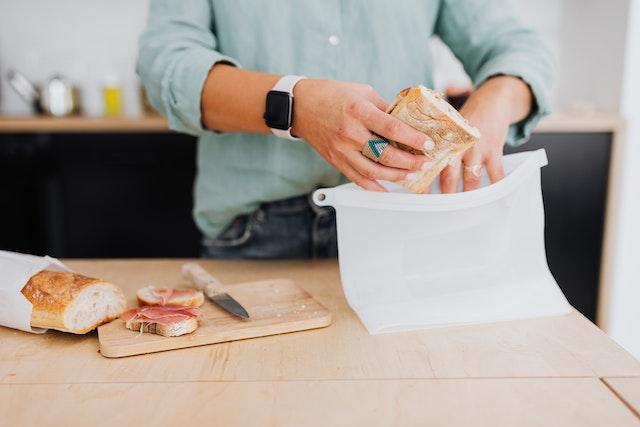
In today’s eco-conscious era, wasting food feels more outdated than ever. Yet, amidst the hustle of relocating, many overlook the silent culprit: moving-induced food waste. But imagine turning the challenge of a move into an opportunity to embrace sustainable kitchen practices. Indeed, reducing food waste during a move isn’t just good for the planet; it’s kind for our pockets, too. Transitioning to a new home can be smooth, economical, and environmentally friendly. This post unveils stellar strategies, ensuring that your food doesn’t end up packed away in landfills as you pack up. Ready to make a change? Dive into these transformative and sustainable methods to redefine your moving experience.
Inventory and Planning Ahead
Are you starting your move? First, raid your kitchen. It’s surprising what lurks in those pantry corners. Next, categorize your finds. Fresh veggies in the fridge? Note them down. Forgotten meat in the freezer? List that, too. Now, strategize your meals. Think of it as a fun culinary challenge. Whip up dishes using these perishables first. For instance, do you have spinach and cheese? Hello, delicious omelette!
Furthermore, this exercise isn’t just eco-friendly; it’s also wallet-friendly. There’s no need to dine out when you’ve got treasures at home. Lastly, embrace this proactive approach, and you’ll witness a significant drop in wastage. Moving sustainably is undeniably rewarding.

Donating Non-Perishables
Donating is a great solution when considering what to do with your food when moving house. It’s a heartwarming, impactful gesture. Non-perishables in your pantry? Consider their potential. For many, they’re a meal waiting to happen. So, think of ways to avoid wasting it. Local food banks warmly welcome such items.
Meanwhile, community shelters often appreciate canned goods. However, always ensure you’re donating usable items. Torn packages or expired goods are a no-go. By opting to donate, not only do you lighten your load, but you also brighten someone’s day. It’s a win-win during your moving transition!
Preserve and Pack
A move can threaten the life of your perishables. But worry not! With the right preservation techniques, they can endure. First, delve into canning. From jams to pickles, canning offers longevity. Plus, it’s a flavorful affair. Alternatively, consider freezing. Fresh fruits, vegetables, or meat? A freezer can be their sanctuary. When sealed properly, they stay fresh, awaiting their grand revival in your new home.
Now, onto packing, a crucial step often underestimated. Based on insights from professionalmoverottawa.com, it’s vital to ensure your food items are snug and secure. First, always choose sturdy, eco-friendly boxes. Also, avoid overpacking. Too much weight? You risk damaging the goods. For frozen items, insulate them with newspapers or bubble wrap. That keeps them chilled longer. Remember, it’s not just about moving; it’s about moving sustainably and wisely. Proper packing ensures your food reaches its new destination in prime condition.

Organize a Moving Sale or Swap
Do you want to turn relocation chaos into community fun? That’s the beauty of a moving sale or swap. Picture this: a sunny day, neighbors mingling, and you’re trading pasta for peanut butter. It’s not just an economical solution; it’s a cornerstone of sustainable kitchen practices. Instead of discarding excess, you’re sharing it. Yet, if a full-fledged sale seems daunting, think smaller. Initiate a food swap. Collaborate with neighbors or friends. A pot of honey for a bag of rice? Why not! By integrating these swaps into your moving plans, you’re promoting a culture of sharing. Plus, it’s a delightful way to bid your community farewell.
Composting the Unsalvageable
So, some food items didn’t make the cut? Don’t fret. Composting is your eco-friendly superhero. By transforming these scraps into nutrient-rich soil, you’re championing Mother Earth. Begin by identifying compost-friendly items. Banana peels, eggshells, coffee grounds? Perfect candidates.
But what about dairy and meat? They’re best avoided, as they attract pests. If you’re new to the composting game, consider a temporary setup. Use a compost bin or even a buried pit. Then, once settled in your new place, invest in a dedicated system. In essence, even when bidding goodbye to unsalvageable food, you’re embracing a green future. It’s recycling but with a green thumb twist!
Grand Unpacking
Once you’ve arrived at your new home, it’s time for the grand unpacking. But here’s the catch: let’s keep it sustainable. Tackling perishables first ensures they remain fresh. After all, they’ve had a long journey. Then, proceed to organize your pantry staples, ensuring efficient accessibility. Now, think about the packing materials. Cardboard boxes, bubble wrap, and newspapers shouldn’t just be discarded. Repurpose, recycle, or even donate. And remember those eco-friendly packaging choices you made? Reuse them for future endeavors. Ultimately, sustainability doesn’t end once the move concludes. Instead, it’s a continuous journey, with each step offering a chance to make earth-friendly choices.

Integrating Sustainability in the New Kitchen
To embrace your new kitchen, make sustainability its heartbeat. Start by diving into bulk buying. Not only does it cut packaging waste, but it’s often economical, too. Next, swap plastic for cloth bags. Sturdy, reusable, and chic, they’re the eco-warrior’s choice. For storage, glass containers reign supreme. Elegant and efficient, they keep items fresh without the plastic guilt. Committing to these practices doesn’t just spruce up your kitchen aesthetics; it embeds eco-consciousness into daily routines. With these steps, you create a kitchen of convenience and a haven of sustainability. A fresh start deserves fresh practice, after all!
Conclusion on Sustainable Kitchen Practices
We’ve discovered a treasure trove of sustainable kitchen practices in our relocation journey. Indeed, moving homes is not just about changing addresses; it’s an opportunity to redefine our eco-ethics. These green strategies minimize waste and kindle a deeper respect for our planet. As you settle into your new space, cherish the knowledge gained and the sustainable choices made. Remember, every little effort contributes to a larger global impact. So, why not pledge to continue these practices, nurturing a green kitchen and a brighter future? Embrace, evolve, and elevate your kitchen’s eco-journey!
